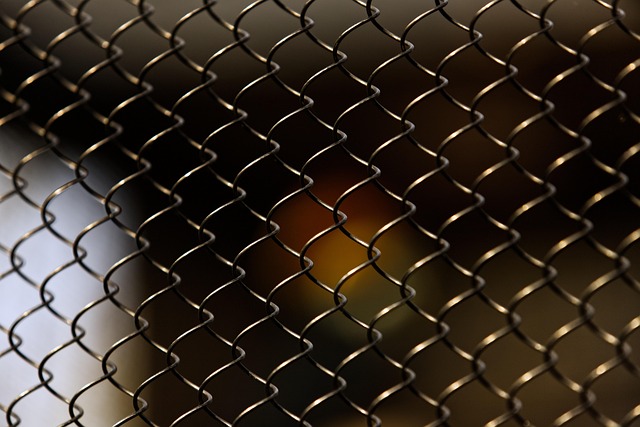Large properties present unique fencing challenges, demanding robust, long-lasting solutions that align with diverse aesthetic preferences and budget constraints. This article delves into the world of cost-effective fencing, exploring innovative alternatives to traditional options. We examine natural barrier solutions not only for their visual appeal but also for their longevity and environmental benefits. From understanding specific property needs to successful case studies, this guide offers comprehensive insights for homeowners seeking both style and savings in fencing.
- Understanding Fencing Needs for Large Properties
- Traditional Fencing: Costs and Limitations
- Cost-Effective Alternatives: A Comprehensive Look
- Benefits of Natural Barrier Solutions
- Installation Tips for Longevity and Value
- Case Studies: Successful Cost-Saving Fence Projects
Understanding Fencing Needs for Large Properties
Large properties come with unique fencing challenges. The extent of the land, diverse terrain, and often, the need to balance aesthetic appeal with durability, make traditional fencing solutions cost-prohibitive for many homeowners. Understanding these specific needs is crucial when exploring cost-effective options.
Beyond mere boundary demarcation, fences for large properties must withstand varying weather conditions, potential wildlife encounters, and in some cases, security considerations. A one-size-fits-all approach won’t work; a successful fencing solution requires careful consideration of the property’s unique characteristics to ensure both functionality and affordability.
Traditional Fencing: Costs and Limitations
Traditional fencing methods can be expensive, especially for large properties. The cost of materials like wood or metal rails can quickly accumulate, becoming a significant financial burden. These conventional fences also have limitations in terms of durability and maintenance. Wood requires regular painting or sealing to prevent rot and insect damage, while metal fences can corrode over time, requiring costly repairs or replacements.
Additionally, traditional fencing often lacks flexibility in design and customization. Pre-fabricated panels and posts come in standard sizes, limiting the ability to adapt to unique property lines and landscapes. This can result in an aesthetic that doesn’t seamlessly blend with the natural surroundings, leaving homeowners with a less-than-satisfactory outdoor space.
Cost-Effective Alternatives: A Comprehensive Look
When considering fencing for large properties, it’s easy to get overwhelmed by the cost. However, there are numerous cost-effective alternatives that can provide both functionality and aesthetic appeal. Options like vinyl fencing offer durability and low maintenance at a fraction of the price of traditional materials. These fences come in various styles, from basic post-and-rail designs to more elaborate pickets, suiting different tastes and budgets.
Another budget-friendly option is chain link fencing, known for its versatility and strength. While it might not be as visually appealing as other materials, it’s ideal for security purposes and can easily enclose large areas without breaking the bank. Additionally, wooden fences treated with rot-resistant chemicals are a long-lasting and eco-friendly choice, providing both privacy and a natural look. These options demonstrate that high quality and affordability can go hand in hand when it comes to fencing solutions.
Benefits of Natural Barrier Solutions
Natural barrier solutions offer an aesthetically pleasing and cost-effective alternative to traditional fencing. One of the key benefits is their environmental friendliness; using natural materials like wood, bamboo, or hedges not only reduces carbon footprint but also provides a habitat for local wildlife. These organic barriers can be tailored to fit any property shape and size, offering flexibility in design. They blend seamlessly with the surrounding landscape, creating a harmonious look that enhances curb appeal.
Moreover, natural barriers provide privacy and security without sacrificing visual appeal. Living fences, such as hedges or bamboo screens, offer a dynamic solution that can grow and change over time, adding character to your property. They are also relatively low-maintenance compared to conventional fencing, requiring minimal upkeep and offering long-term cost savings.
Installation Tips for Longevity and Value
When installing fencing for large properties, prioritizing longevity is key to maintaining value. Start by ensuring a solid foundation; properly prepare the ground, compacting it where necessary, and consider using concrete or gravel bases for posts to prevent rot and maintain stability over time. Regular inspection and maintenance are also crucial. Check for loose connections, damaged panels, or rotted posts at least twice a year, addressing issues promptly to prevent further deterioration.
For added durability, opt for high-quality materials that can withstand harsh weather conditions and the wear and tear of large landscapes. Vinyl and treated wood offer excellent resistance to rot and pests, while chain link fences provide security without requiring extensive maintenance. Regular cleaning and treatment with appropriate products will further extend the life of your fence, ensuring it remains a valuable asset for years to come.
Case Studies: Successful Cost-Saving Fence Projects
In the realm of large property ownership, finding both aesthetically pleasing and cost-effective fencing solutions can be a challenging task. However, numerous case studies illustrate that it is possible to achieve both. For instance, one successful project involved a sprawling estate owner who sought a fence to enhance security while maintaining an open, natural aesthetic. The solution: a custom-designed, low-maintenance metal mesh fence. This innovative design not only provided the necessary privacy and safety but also seamlessly integrated with the surrounding landscape, ensuring the property retained its vibrant, bustling atmosphere.
Another notable case involved a rural farm looking to contain livestock while reducing costs. They opted for a sturdy yet economical chain-link fence, reinforced with additional posts at regular intervals. This cost-saving approach not only contained animals effectively but also allowed for easy maintenance and repairs, proving that durable fencing doesn’t always come at a premium price. These real-world applications demonstrate that with thoughtful planning and the right materials, it’s possible to create lasting, functional fences without breaking the bank.
